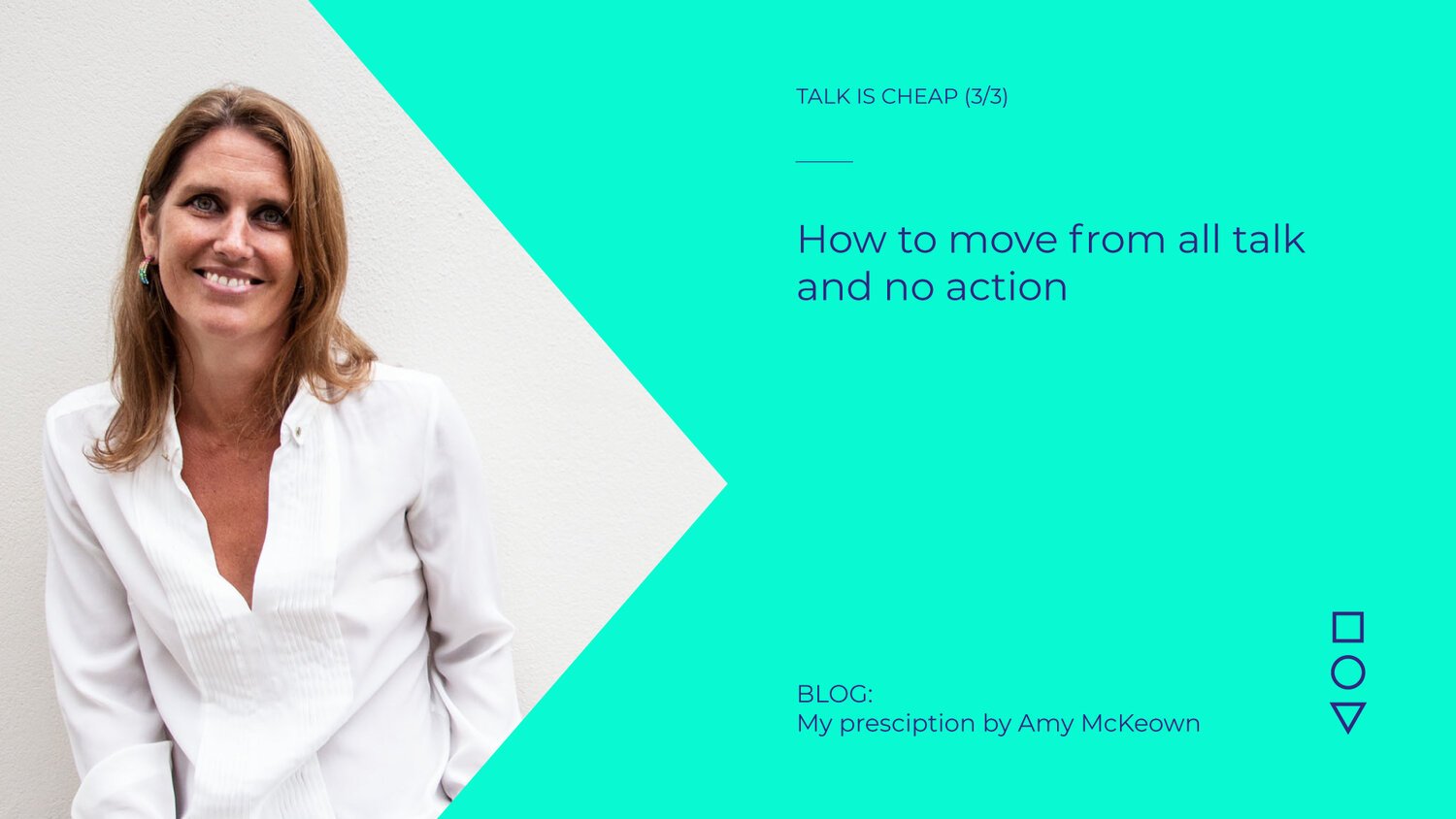How to move from all talk and no action
This month I’ve been looking into the current dialogue and conversation around mental health. I suggested we might have reached ‘peak talk’ around mental health in that to me, it seems that more celebrities, royals and business leaders are talking about their mental health than aren’t. I also suggested that all this talking isn’t really changing things on the ground for people suffering from mental health conditions.
I really enjoyed the discussion that followed. We seemed to agree that whilst we have moved a long way in terms of raising awareness and the stigma of mental health (and talk definitely has a place to play here), we had much further to go in terms of investing in more organisational and NHS mental health services. In fact, we have barely started to do anything in this direction.
I also enjoyed the challenge around my comment ‘talk is cheap’. I had meant that it is much cheaper and easier for organisations to talk about mental health – speaker events, business leaders sharing stories, awareness training – than doing e.g. commissioning mental health support and health providers. I stand by this. Though I also agree that talking therapies for mental health aren’t cheap. In fact, they are very expensive which is why we have a real problem with NHS provision in this area; access to talking therapy is scarce and lengthy.
So, is talk cheap? Or isn’t it? It’s both, depending on your reading of the word. Is there such a thing as ‘peak talk’? Not if it means people are coming forward for help. Suicide is still the main cause of death for men aged 20-49 in the U.K. Talk is necessary for people suffering, but talk without action or investment in services is just hot air…
Here are my top tips on how to turn talk into action in your organisation:
1. Include stigma and awareness raising in your organisational health, mental health and wellbeing strategy. It’s a key part of prevention and education. The whole strategy and structure need to be in place preferably BEFORE you start your awareness raising work. You need to have figured out where you are going to signpost people with problems to, and how. As soon as you start talking more people will come forward for help. If you haven’t sorted signposting then you will have problems
2. Be very clear about what your narrative is. What messages are being given by who? Are these consistent with your systems, policies and processes? Are they authentic? What are you trying to achieve by them?
3. Think through the potential risks. Are people going to be triggered by the conversation? If they are, how will they be looked after? Do you have the support services and HR processes in place? Likewise coming forward and sharing your story can be very exposing for the speaker? How are you going to support them? Have you done a full risk assessment?
4. Put some thought and structure into how you are going to use the engagement around mental health to transform things within the organisation. You can make major changes to stigma by channeling the enthusiasm and energy around mental health into safe, well-governed activities. These need clear boundaries and roles though. You can’t just have groups of people talking around mental health or supporting each other without any governance, however well meaning this is.
5. Listen to what your people are saying. Use this information and guidance to help ensure you are buying the right health provision and putting in useful and appropriate systems, policies and processes. The other side of talking is listening. As well as making your people feel heard, this enables you to design your approach to mental health based on what people need or feel they need. A win-win for you and your people.
All this only tackles part of the problem though. A key challenge is that after 30 years of cuts, we just don’t have enough NHS services to look after people suffering from mental health conditions. Organisations have a role here too:
· By investing in their own mental health providers they are helping their people find help fast. This takes pressure off NHS services for others.
· By becoming part of the political narrative around mental health, pressure builds on the government to invest more into NHS provision.
Next month, I’ll be looking at ‘Why HR should be kept away from mental health’ or at least should only be one of numerous stakeholders in it. In many organisations exactly where health, wellbeing and mental health ‘sits’ and who leads it is a big topic of concern (often with a lot of politics around it). I’ll be exploring the options and the positives and negatives of each. Why running your strategy from HR might not be the solution that you thought it would be. Anyone working on health, mental health or wellbeing in an organisation should check it out.
Keep going with comments and debate. The more we explore these topics together the better and the more we can change things for the better.
Do you want support and guidance with an expert in the field? Mentorship with Amy McKeown is available - check out more info HERE

